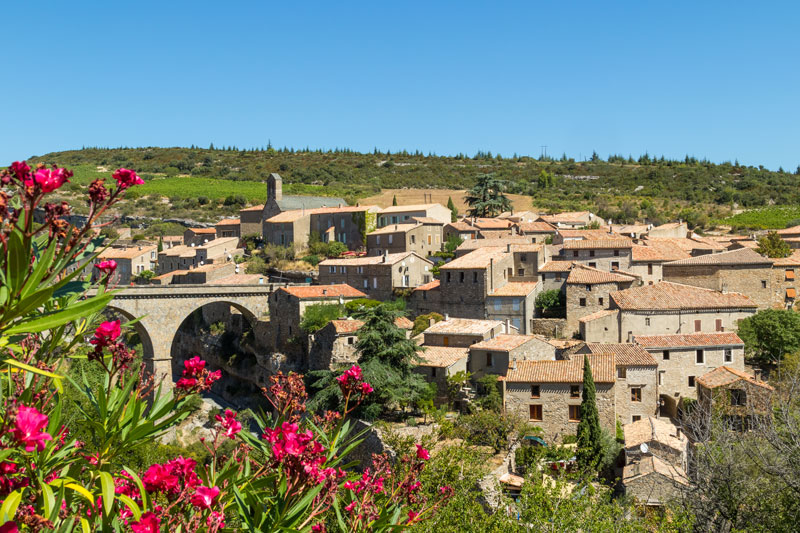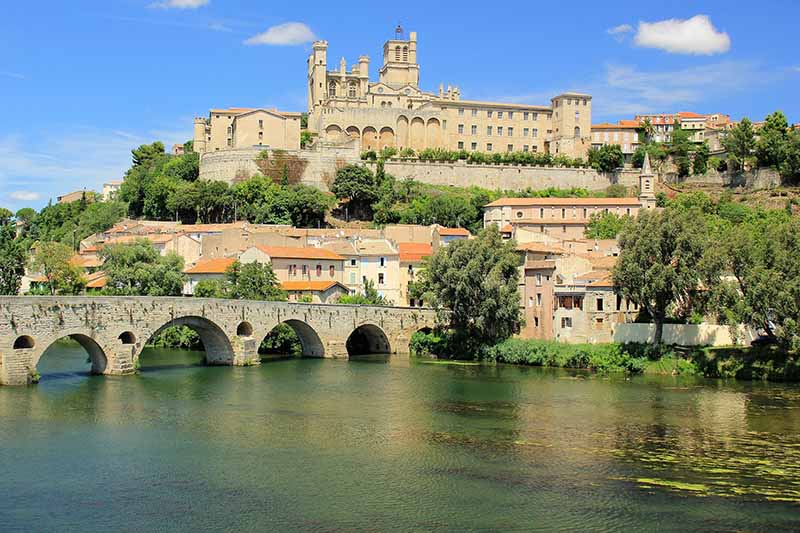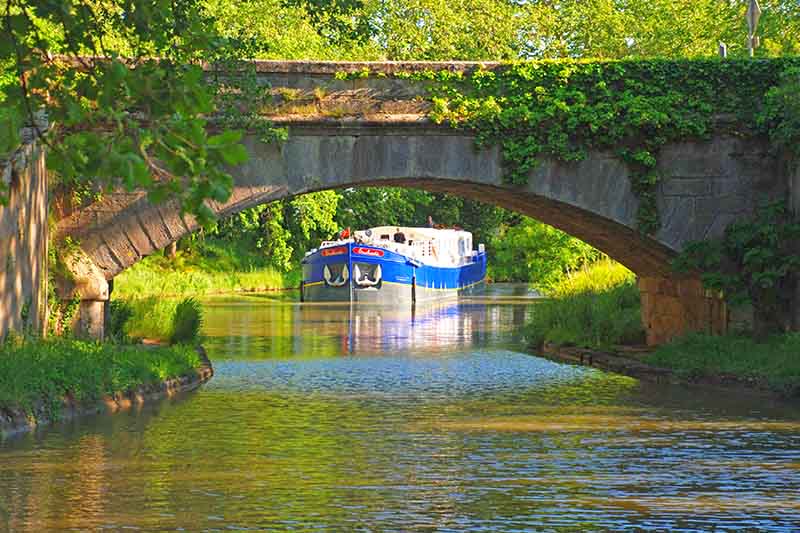France’s Canal du Midi cuts through picturesque, tranquil countryside – home to award-winning vineyards, fields of wild flowers, and animals grazing in the sunshine. Drifting along aboard a hotel barge during a cruise on this lovely canal, you’d be forgiven for thinking that this region, Languedoc-Roussillon, is a place where peace has always reigned…
And yet, this region has seen upheaval and turmoil over the course of its long history. One popular stop along the canal’s corridor is the village of Minerve, named one of Les Plus Beaux Villages de France (“The Most Beautiful Villages of France”). But beneath its undeniable beauty and charm, Minerve is the site of tragedy and violence.
Minerve and the Albigensian Crusade
During the 13th century, a new Christian movement was on the rise in Languedoc-Roussillon. Members of this new movement, the Cathars, believed in the equal and opposing forces of God and Satan, and advocated a return to the Christian message of poverty, perfection, and preaching.
In 1209, Pope Innocent III initiated a military campaign to eliminate Catharism from the Languedoc-Roussillon region, an effort that became known as the Albigensian Crusade. After a devastating massacre at the town of Béziers, a group of Cathars sought refuge in Minerve, which was well-fortified with a strong defensive position above the junction of the Cesse and Briant rivers.
For six weeks the crusaders, led by Simon de Montfort, besieged Minerve with trebuchets and other weaponry. When the village eventually fell, the Cathars remained defiant and 140 Cathars chose death by burning rather than renounce their faith.
Minerve Today
Today Minerve is quiet and tranquil, though several monuments and some original stone fortifications stand to remind visitors of the Cathars’ sacrifice. If you’re visiting Minerve as part of one of our Canal du Midi cruises, you can explore the village’s steep and narrow streets, perhaps stopping to sample the local Minervois wine at one of the charming cafés. The village, which allows no vehicles except for those belonging to its residents, maintains much of its medieval atmosphere, so you can get a real feel of what it was like to live there in the time of the Cathars.
 English
English
 Spanish
Spanish French
French German
German Norwegian
Norwegian Portuguese
Portuguese Swedish
Swedish Italian
Italian Russian
Russian Simplified Chinese
Simplified Chinese Japanese
Japanese


